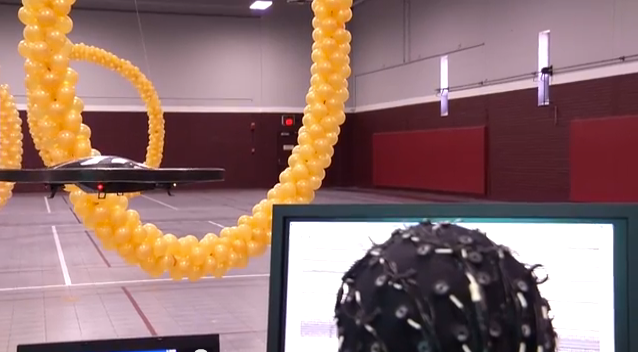Brain-computer interfaces are among the more mind-blowing technological developments of the past decade. As I explained in March, the most advanced of these interfaces can allow a paralyzed person to feed herself chocolate with a mind-controlled robotic arm. But that requires implanting a computer chip in the person’s brain, an invasive procedure that few would choose to undergo unless they had to.
Scientists are also working hard on non-invasive skull caps, which use electroencephalography (EEG) to try to detect faint electrical signals emanating from different parts of the brain. These are far cheaper, but also tend to produce far less impressive results than the invasive neural implants. Often, devices that claim to let you control a computer game or move a ball with your mind are in fact relying in large part on physical signals like skin conductivity or the tension of your forehead muscles. Still, the best EEG headsets probably can detect at least crude patterns of neural activity—perhaps enough to allow you to move something up or down, left or right just by concentrating really hard on it. Like, say, a flying robot.
This is the result of research by Bin He and his team at the University of Minnesota, who say that they’ve been able to improve the precision of EEG interfaces by mapping the parts of the brain that are most active when people imagine moving something in one direction or another. Their work was published this week in the Journal of Neural Engineering, and you can watch the rather cool results in the video below.
